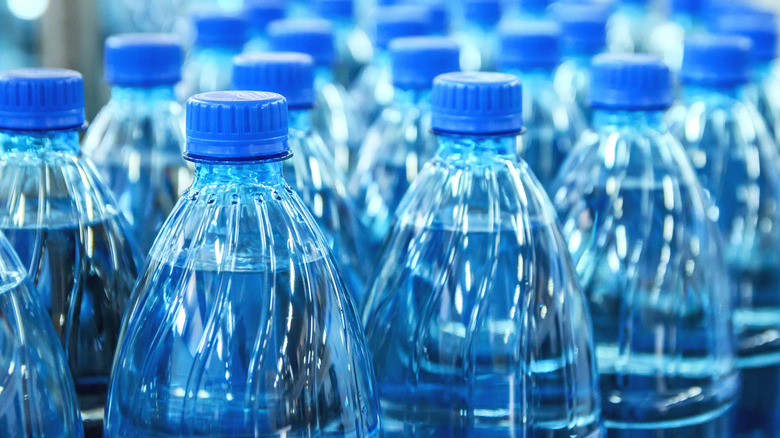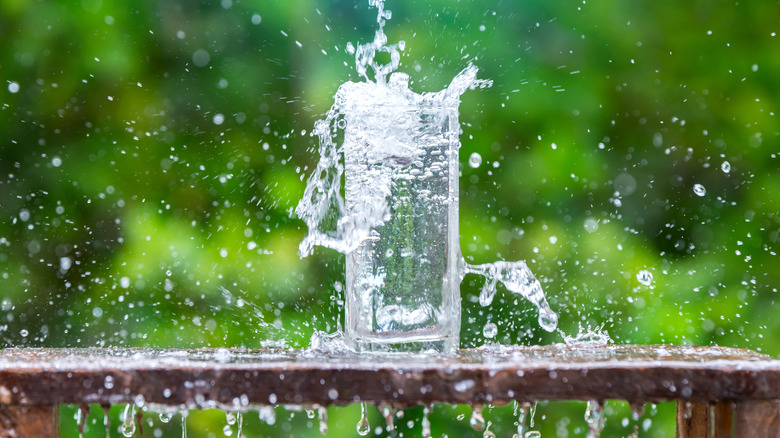These Surprising Ingredients Could Be In Your Bottled Water
A typical advertising technique of bottled water companies is to boast about how organic their product is (as if water could be anything else), gushing over the natural springs that it's sourced from after thousands of years of purification. This means that a much higher price can be charged than the alternative of dunking a plastic bottle into a bathtub.
The insinuation is that bottled water provides more goodness than the convenience of using the faucet – but just how nutritious is bottled water? A browse at the labels of many popular bottled water brands shows ingredients that could come as a surprise (and be confusing) to many.
Insider notes that bottled water ingredients can include options such as magnesium chloride, sodium chloride, and potassium bicarbonate. Unless you happen to be a scientist, these words only prompt questions – and, in some cases, concerns. So, let's take a look at what these unusual bottled water ingredients mean in reality.
Natural nutrients in bottled water actually help to improve health
The most important thing to consider is that the extra ingredients included by bottled water companies do not pose a risk to human health, as noted by Time. Experts have confirmed that the nutrients are naturally occurring, but small amounts are added in order to give bottled water some flavor. Many provide health benefits, including improved digestion and heart function.
Not that scientific advice is a match for scaremongers on Facebook, obviously. USA Today has debunked a myth claiming that the calcium chloride commonly found in bottled water could cause stomach aches and vomiting. Although calcium chloride can cause issues when ingested in high amounts, only very small quantities are added to bottled water and the FDA does not judge there to be any safety concerns.
Despite the added nutrients of bottled water receiving the approval of experts, the Safe Drinking Water Foundation reports that bottled water in the U.S. does not require the same safety standards as tap water. Differences include less frequent testing for bacteria, no requirement to filter pathogens, and no obligation to report violations to the authorities. Something to keep in mind the next time you visit a restaurant.

